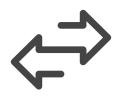First, feelings are very important, and that is true for emails, too. When you write a good email start, it helps set a good mood for talking and can make the email person think good of you.
If you are writing to someone new, like a potential client, a person you might work with soon, or someone you do not know yet, an excellent start to your email can help make things go well.
Being professional and polite means that you take time to introduce yourself efficiently in emails. It helps you show who you are and why you are writing.
A good introduction can make the person want to read more. It can make them answer your email. If you follow some easy steps, you can write a hello that people remember. It helps you do well when you email people.
Good subject line
The subject line of your email is the first thing to show you off in the world online. A short and clear subject line tells the email person what your email is about.
Say your name and why you are writing fast. One idea is “Hello from [Your Name] – [Why You Write].” This gives the email person an idea right away. Or, “Hello from [Your Name] – I Want to Work Together” shows what you want to do. It helps start a good talk.
In a world with lots of emails, a good subject line helps your email get read. It catches the attention of readers and engages them quickly.
Use the professional email address.
Your email address is also important for a first impression. Make sure to use the right email address. Do not use funny names or things that are not serious. Your email should have your first and last name.
A good address is like j.smith@example.com. An email with com shows you are serious about business. An email like rockstar1@example.com does not show that.
Greetings
In formal situations, use “Dear [Recipient’s Name].” It is polite and suits serious businesses.
“Hi [Recipient’s Name]” is better for creative jobs or new tech companies. The way you say hello in an email sets the tone for the message. Picking the right greeting is important.
Opening sentence
When you write an email, tell them your name and job first. You might say, “I am Jane Doe, a Marketing Manager at XYZ Corporation.”
This makes you sound professional and tells the person who you are. If you know someone in common, tell them. This can help you connect better.
Purpose of the email
Be clear about why you are writing the email. Say what you want early on. You might write, “I want to talk about working together.” This lets the person understand your main point quickly.
Give information about yourself that is related to the purpose of the email. This makes your message stronger. Talking about things you both care about can help you work together.
Relevant information
Add more information that helps your email’s reason, but keep it short. Sum up your work or big wins that matter to the talk. Say, if you want to work together, talk about old projects or wins that show you know your stuff.
Talk about your experience or skills that show you are the right one for this chance. But do not tell the person too much. Just talk about the main points and add more details if needed, like a CV or a display of your work.
Being exact is important. People get a lot of emails every day, so making your email simple and to the point can help a lot. Giving too much info in an email does not help. Being short means every sentence is important and keeps the person reading.
Shortness is good, but also think about how you sound and how professional you are. If your email is too relaxed, you might not look serious. If it is too stiff, you may feel far from the person reading. Find a good middle so your email gets read and people think it is important.
Call to action
In a good email, what you ask the reader to do next is key. To move the talk on, always say clearly what you want to happen. Offer to have a talk or a meeting to go into things more.
You might write, “Can we have a call next week to talk more about this?” Asking questions like, “What time is good for you?” or “Can you meet next Tuesday?” shows you really want to go forward.
Your email should make it clear what you want to happen next. Say when you can meet and offer some days and times. I am free on Monday and Wednesday afternoons. Please tell me if these times are good for you. When you give specific days, it saves time.
Closing the email
End your email well. Use “Sincerely” for formal emails and “Best regards” for less formal ones. Your last words should match your email’s mood and show you are professional.
Put your full name and contact details at the end of your emails. This looks professional and helps people reply to you. Write your name, job, company, email, and phone number.
Proofreading
Always look over your email before you send it. Look for mistakes and make sure they are easy to understand. Reading your email out loud can help you find errors that you may not see.
Signatures

Use your full name in your email signature. Add your job title so people know your role. For example, “Jane Smith, Senior Marketing Manager.”
Your company name should come after your title. This shows who you work for, and it makes your brand known. For example, “Jane Smith, Senior Marketing Manager, XYZ Corporation.” Put your company name in your communications. It helps to brand your company. It also makes you look more trustworthy.
Being easy to contact is good. Give more ways to contact you, not just basic details. Add your email, phone number, and LinkedIn profile. Different ways to contact you help people choose how to reach out. It shows you want to talk and makes you look friendly.
Templates for introducing yourself in emails
Making a strong first impression is crucial, and emails are no exception. Here are three email templates to help you introduce yourself effectively:
Template 1: Reaching out to a client
Subject: Introduction from [Your Name] – Marketing Solutions for [Client Industry]
Dear [Client Name],
My name is [Your Name], and I’m the [Your Position] at [Your Company]. We specialize in helping businesses in the [Client Industry] like yours achieve their marketing goals through [Brief Services Offered].
I came across your company’s [Reason for Reaching Out – e.g., impressive website] and believe our expertise could significantly benefit your brand. I’d love to schedule a quick call to discuss your current marketing strategy and explore potential collaboration opportunities.
In the meantime, you can learn more about our work at [Your Company Website].
Best regards,
[Your Name]
Marketing Manager
[Your Company Name]
[Your Email Address]
[Your Phone Number (Optional)]
Template 2: Seeking collaboration with a professional
Subject: Hello from [Your Name] – Seeking Collaboration
Hi [Recipient Name],
My name is [Your Name], and I’m a [Your Position] at [Your Company] (or freelance [Your Field]). I’m impressed with your work on [Specific Project/Achievement] and believe our combined expertise could be valuable.
I’m currently working on [Brief Project Description] and would love to explore the possibility of collaborating. I have experience in [Relevant Skills/Experience]. Perhaps we have some shared goals or interests in [Shared Interest]?
Would you be open to a quick call to discuss a potential collaboration? I’m available on [List Availability].
Best regards,
[Your Name]
[Your Title/Freelancer]
[Your Contact Information]
Template 3: Introducing yourself to a colleague
Subject: Introduction – [Your Name] from [Your Department]
Dear [Colleague Name],
My name is [Your Name], and I’m the new [Your Position] on the [Your Department] team. I’m excited to be joining the team and contributing to [Shared Goal/Project].
[Optional: Briefly mention a mutual connection or how you learned about them].
I’d love to learn more about your role and how we can collaborate effectively. Perhaps we can grab coffee sometime next week?
Sincerely,
[Your Name]
[Your Position]
[Your Department]
[Your Contact Information]
Following these effective tips, you can prevent emails from going to your spam folder. This requires writing emails professionally. Introducing yourself in an email is an art, and this requires effective strategies. The above comprehensive guide makes sure that you do this efficiently and get yourself introduced well.

